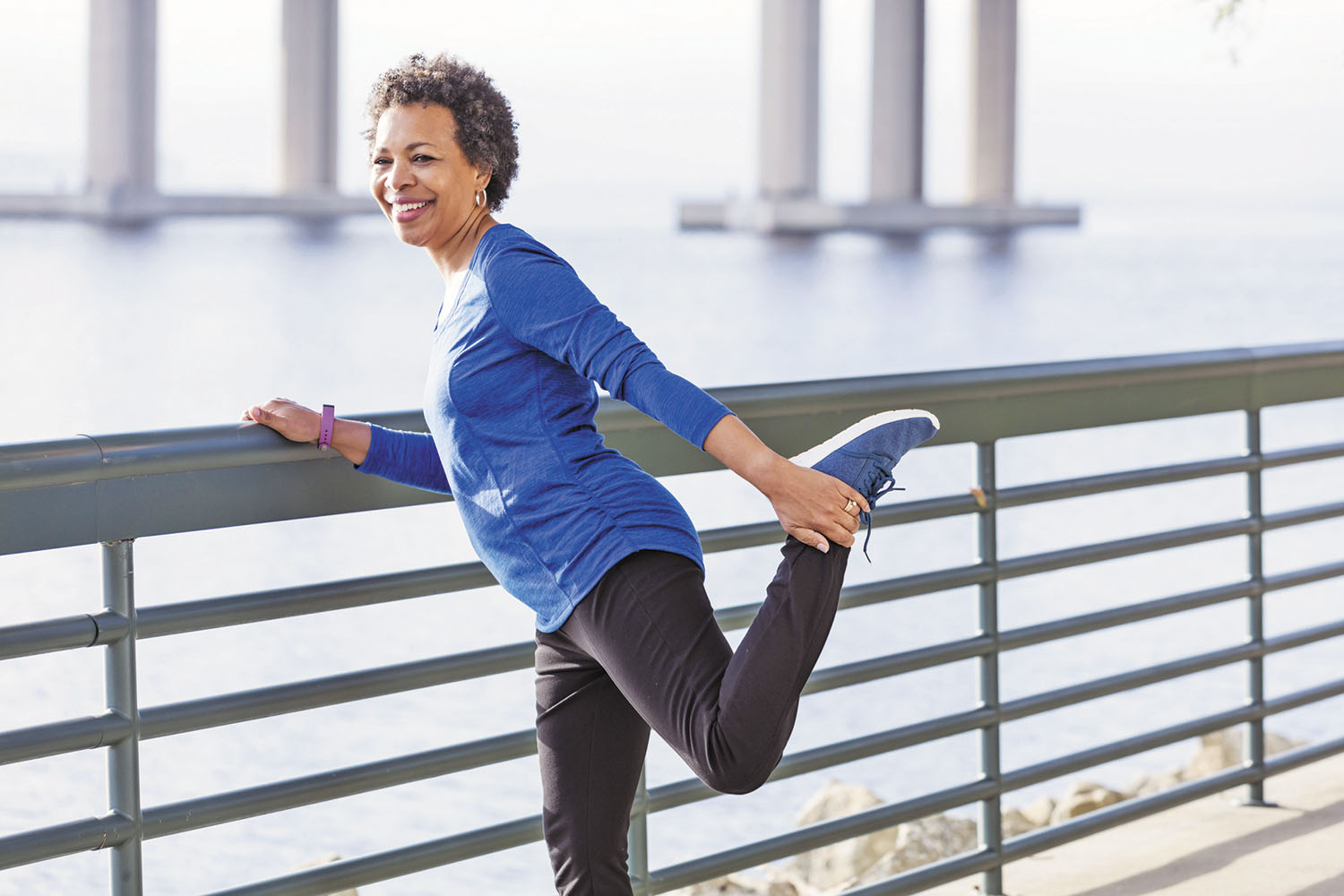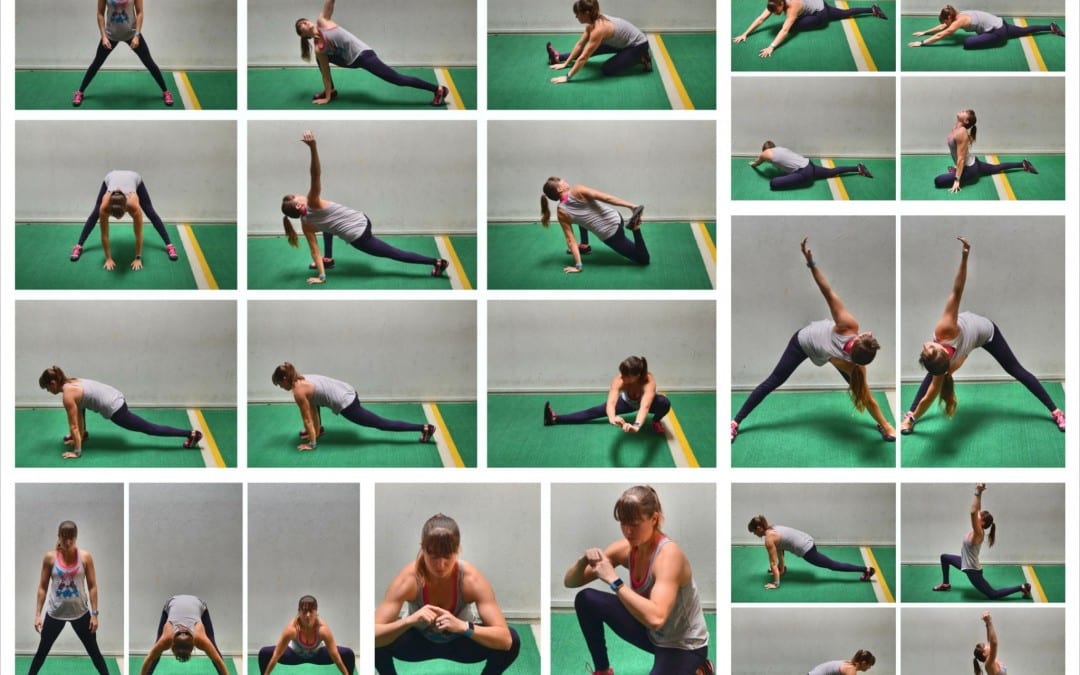Hi Everybody!
Last week I did Pilates, Weight lifting, Running (7 mi) and a Spin Class. As you might imagine, I am feeling quite a bit of DOMS (Delayed Onset Muscle Soreness) and needing some good stretches.
WHEN TO STRETCH
There are many theories about when to stretch. When I was in gymnastics, we did not do anything without a lot of static stretching. Most of our dynamic activities were either gymnastics or a short run around the gym. The idea that dynamic stretches could be better wasn't considered. In fact, many of us had experienced a pulled muscle due to overextension of "cold" muscles so we were wary of doing dynamic stretches. This link discusses scientific evidence about WHEN and WHY to stretch.
However, recent athletic science seems to indicate that dynamic stretches BEFORE and static stretches AFTER are the best approach. Of course, you need to consider what you'll be doing and stretch the appropriate muscles for that sport.
 If you regularly practice yoga with both series and static positions, you may be doing enough to keep your muscles limber and your joints flexible. You may be asking, why do muscles and joints stiffen up? Good question!
If you regularly practice yoga with both series and static positions, you may be doing enough to keep your muscles limber and your joints flexible. You may be asking, why do muscles and joints stiffen up? Good question!
WHY IS STRETCHING IMPORTANT?
Here is an article from Harvard Health on why stretching is important.
The simple answer is that when you exercise you are contracting the muscles and fatiguing them. After the exercise, the muscles will continue to contract and eventually, without stretching to counterbalance the work of the exercise, the muscles become shorter. Shorter muscles cannot contract as well and will be unable to exercise as effectively as well-stretched and flexible muscles.
The simple answer is that when you exercise you are contracting the muscles and fatiguing them. After the exercise, the muscles will continue to contract and eventually, without stretching to counterbalance the work of the exercise, the muscles become shorter. Shorter muscles cannot contract as well and will be unable to exercise as effectively as well-stretched and flexible muscles.
TALK TO YOUR MUSCLES
From my years of teaching Yoga, I can tell you that each time you stretch a muscle, that muscle "speaks" to you. It says "I can't do that, here's some pain to convince you to stop." However, like a parent, you should speak back to that muscle and say, "yes you can, I'll wait." You'll find that the muscle "let's go" of the pain in small increments as you wait. Push the muscle gently (not by rocking but by moving into the stretch gently and waiting). You'll find that you can do about 10% more than the muscle will let you do initially.
BREATHE TO YOUR MUSCLES AND JOINTS
While you are in the flexed position, remember to breathe. Imagine you are breathing directly to that joint and the muscle where the pain is the worst. Keeping holding and breathing, visualizing that muscle and the joint getting all that red blood filled with oxygen. Imagine the oxygen going to that spot and see the cells rebuilding and expanding as they too breathe. This visualization is an important part of the stretching process. In fact, when you stretch, you open up the muscles and joints to new circulation which helps your cells rejuvenate and carry away any dead cell matter. You are cleaning your body and rebuilding your cells with new stronger and more efficient cells.
While the science of when, why and what is still developing, there do appear to be good reasons to suggest that dynamic stretching is a good way to warm up for your training. You may want to experiment to see what works best for your body.
For more on each type as well as some diagrams and videos that may help you add stretching to your exercise regimen, see below. Happy stretching!
DYNAMIC STRETCHING BENEFITS
- The increase of body heat and blood flow loosens muscles and tendons. This improves overall power and strength performance. Static stretching actually cools necessary muscle groups and so does not actually reduce the risk of injury, and it can weaken muscles.
- It prepares the muscles by practicing the movements that will be required of them. This means the muscles are well engaged and ready for a quick sport-specific response. Basketball players who combined dynamic stretching with plyometric (jump) training show improved vertical height and agility. Static stretching usually has no relevance to the task at hand and may have a negative effect on balance and agility.
- It improves the flexibility needed for the specific sport by increasing the range of motion around the joints. Over time, this will maximize performance and reduce the risk of injury.
- While static stretching puts the body in a relaxed state, dynamic stretching offers mental preparation for athletes by putting their bodies and minds into motion so they are ready for the competition ahead.
>Greater flexibility and range of motion
>Less pain and stiffness
>Decreased stress Increased blood flow
>Improved performance Stretching at the end of your workout, once your muscles are warmed up, can help increase therange of motion Having greater flexibility and range of motion can help you move with more comfort and ease. This can make everyday tasks and exercises easier.
>Decreased stress Increased blood flow
>Improved performance Stretching at the end of your workout, once your muscles are warmed up, can help increase the
>Having tense, tight, or overworked muscles can cause pain and discomfort. Research has shown that static stretching is an effective way to reduce stiffness
>High levels of stress can cause your muscles to feel tense and tight. Stretching your muscles can help them relax and, when combined with mindful breathing exercises, it can also reduce mental tension and anxiety.
>A 2018 study boosting the flexibility of your muscles can enhance your agility, speed, and muscle strength. This may help you perform at a higher level when you work out or play a sport.


No comments:
Post a Comment